 |
 |
 |
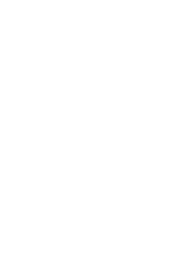
|
Carl Fabergé, about 1900
Photo courtesy of Alexander Gunst
|
|
 |
FABULOUS FABERGÉ, JEWELLER TO THE CZARS
part 1
14/6/2014-5/10/2014
The Montreal Museum of Fine Arts (MMFA) is proud to present – in a Canadian exclusive – the finest Fabergé collection outside of Russia, from the Virginia Museum of Fine Arts (VMFA) in Richmond. The exhibition Fabulous Fabergé, Jeweller to the Czars will run from June 14 to October 5, 2014. The name of Carl Fabergé (1846-1920), the Russian jeweller who created valuable objects for the Czars Alexander III and Nicholas II, became synonymous with elegant craftsmanship in luxurious jewellery. The House of Fabergé was also associated with the last days of the Russian imperial family and a tragic chapter of history at the start of the twentieth century. The exhibition comprises some 240 objects, including four of the forty-three remaining famous Easter eggs commissioned by the Romanovs.
|

|
Posted 18 August 2014
|
Share this:
|
|
It also features a wealth of documentation on the history and traditions of Orthodox Russia, the techniques of the House of Fabergé and those who forged its works, and the fall of the czarist regime, which brought about that of the jeweller. Enamelled picture frames, gold jewellery encrusted with precious stones, miniature hardstone animals, rock-crystal flower vases, silver and icons paint a picture of the luxurious lifestyle of the time of the czars.
Nathalie Bondil, the MMFA’s Director and Chief Curator, added: “This first major exhibition on Fabergé to be shown in Canada is a unique opportunity to discover the splendour of the decorative arts of the House of Fabergé, whose fate was tragically linked to the history and fall of the imperial house of Russia in 1917. The jeweller’s symbolic significance and artistry still exert their fascination, from the ‘dollar princesses’ of yesteryear to the new czars of today who collect them. By working with designer Hubert Le Gall and structuring the show around the four iconic imperial eggs, we have created a theme-based layout that links the decorative arts, and their craftsmen and techniques, with the history of imperial Russia, from the medieval Orthodox traditions to the advent and fall of the Romanovs. This exhibition is also an opportunity to pay tribute to two exceptional women who collected decorative art objects to enrich our museums: Lillian Thomas Pratt, who bequeathed her Fabergé collection to the Virginia Museum of Fine Arts, and the late Liliane M. Stewart, our major patron of design. ”
Dr. Géza von Habsburg, curatorial director of the London-based Fabergé Company, and a renowned specialist, said: “With its five imperial eggs, the Fabergé collection of the Virginia Museum of Fine Arts is the largest of its kind outside of Russia. Its eggs, four of which are travelling to Montreal, are some of the greatest masterpieces ever created by Fabergé, who was, according to connoisseurs, the world’s most famous goldsmith. The museum’s masterworks include a small hardstone statuette of a sailor from the imperial yacht Zarnitsa, a very rare picture frame in the shape of a column with a portrait of Nicholas II and another in a star shape with a portrait of the Grand Duchess Tatiana, second daughter of the last czar, which may well be the last sad trace of the murder of the entire imperial family at Yekaterinburg in 1918. None of these pieces has ever left American soil.”
“We are thrilled to present our world-class Fabergé collection at the Montreal Museum of Fine Arts,” said Alex Nyerges, Director of the Virginia Museum of Fine Arts. “It is just one of many collaborations we have had – including ground-breaking exhibitions of the work of Louis Comfort Tiffany and Tom Wesselmann – with a museum with whom we share so many core values, most especially the importance of bringing great world art to our respective cities and communities”.
An exhibition designed to showcase the imperial eggs
Extraordinary achievements of art and craftsmanship, executed in precious metals and inlaid with jewels, Fabergé’s imperial eggs continue to fascinate the general public. Superbly worked, each one concealing a surprise inside, they were mainly created for the czars of Russia, who
gave them as Easter gifts to members of their family. Only forty-three of them are still extant.
Diane Charbonneau, Curator of Modern and Contemporary Decorative Arts at the MMFA, explained: “The exhibition opens by setting these precious eggs – family gifts and personal symbols of affection – in their context within the tradition of Orthodox Easter. The circuit continues with the theme of the traditional culture of imperial Russia. Some objects represent a return to tradition (the traditional kovsh drinking vessel) or the classic decoration of polychrome cloisonné enamel. Other items feature imagery inspired by the tales and legends of Russian folklore or famous historical figures like Catherine the Great.”
Sylvain Cordier, Curator of Early Decorative Arts at the MMFA, continued: “We then examine the processes of manufacturing and marketing Fabergé products: the role of the various workshops, the variety of styles and the precious and semi-precious materials showcased, and the tastes of the clientele, including ‘Fauxbergé’ objects. The last section of the exhibition features the history of the last Romanovs, from the coronation of Nicholas II in 1896 to the family’s execution by the revolutionaries in 1918, and the place of Fabergé’s creations in the everyday life of the imperial family.”
|
|
|
|
|

|

|

|
1. The Easter Egg in the Orthodox Tradition
3On the other side is a portrait of Nicholas II with a miniature painting of the Winter Palace, the official residence of the imperial family. When the egg is opened, a miniature replica of the famous equestrian statue of Peter the Great executed by Falconet at the request of Catherine the Great rises up from the shell and stands out against
the gilt enamel guilloché of the lid. This piece is a striking demonstration of the jeweller’s masterful handling of the various shades of gold. The two-headed eagle in black enamel on the lower part of the shell emphasizes the dramatic nature of the piece.
|
|
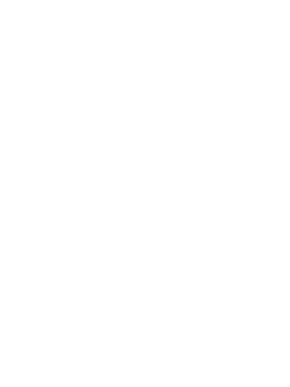
Carl Fabergé (1846–1920)
Fabergé firm, St. Petersburg, Mikhail Perkhin (workmaster)
Elephant Box
Before 1899
Nephrite, ivory, gold, silver, rubies, diamonds
8.3 x 9.5 cm.
Virginia Museum of Fine Arts, Bequest of Lillian Thomas Pratt
Photo Travis Fullerton © Virginia Museum of Fine Arts
|
|
|
|
|

|

|

|
2. In the beginning, the thousand-year empire of the czars
Imperial Peter the Great Easter Egg, 1903 Mikhail Perkhin (workmaster) A miniature by Vassily Zuiev
Czar Nicholas II gave the Imperial Peter the Great Easter Egg to his wife, Alexandra Feodorovna, in 1903 to commemorate the 200th anniversary of the founding of Saint Petersburg. On one side is the miniature portrait of Peter the Great, the inscription “1703” and a depiction of his modest log cabin, the city’s first building.
|
|
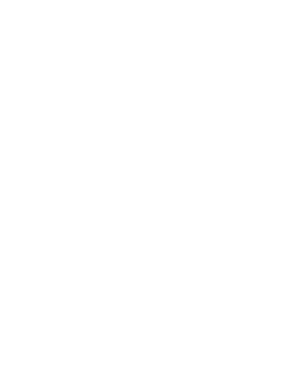
Carl Fabergé (1846–1920)
Fabergé firm, Mikhail Perkhin (workmaster)
Imperial Peter the Great Easter Egg
1903
Egg: 12 x 7.9 cm
Surprise: 4.7 x 6.9 cm
Stand: 7.7 x 6.9 cm
Egg: gold, platinum, silver gilt, diamonds, rubies, enamel, watercolor, ivory, rock crystal
Surprise: gilt bronze, sapphire
Virginia Museum of Fine Arts, Bequest of Lillian Thomas Pratt
Photo Katherine Wetzel © Virginia Museum of Fine Arts
|
|
|
|
|

|

|

|
3. In the workshops and showroom of the House of Fabergé
Imperial Cesarevich Easter Egg, 1912 Henrik Wigström (workmaster)
The Imperial Cesarevich Easter Egg consists of six sections of lapis lazuli decorated with two-headed eagles, winged caryatids, hanging canopies, strap work, floral baskets and sprays disguising the joints. It is set in a base of a large solitaire, and a thin, flat tabular diamond covers the Cyrillic monogram AF (for Alexandra Feodorovna) and the date 1912. Inside the egg is a two-sided portrait of the Cesarevich Alexei at the age of eight painted on ivory, inlaid in a support in the shape of a two-headed eagle encrusted with diamonds, resting on a lapis-lazuli pedestal.
|
|
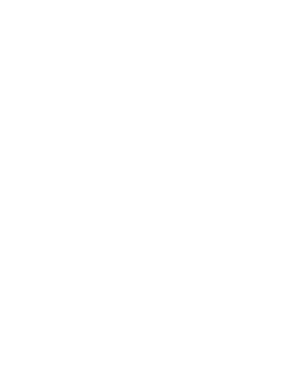
Carl Fabergé (1846–1920)
Fabergé firm, Henrik Wigstrom (workmaster)
Imperial Cesarevich Easter Egg
1912
Egg: Lapis lazuli, gold, diamonds
Surprise: platinum, lapis lazuli, diamonds, rock crystal, watercolor , ivory
Egg: 12.3 x 9 cm
Surprise: 9.5 x 6 cm
Stand: 6.6 x 10.4 cm
Virginia Museum of Fine Arts, Bequest of Lillian Thomas Pratt
Photo Katherine Wetzel © Virginia Museum of Fine Arts
|
|
|
|
|

|

|

|
4. Fabergé, jeweller to the last czars
Imperial Red Cross Easter Egg with Portraits, 1915 Henrik Wigström (workmaster) Miniatures by Vassily Zuiev
A gift from Nicholas II to his mother, Dowager Empress Maria Feodorovna, this egg pays tribute to the Empress’s presidency of the Russian Red Cross during World War I. The egg contains a hinged folding screen holding portraits of her daughter-in-law, Empress Alexandra, her two elder daughters, Olga and Tatiana, and two other close relatives, all wearing the habit of the Sisters of Mercy. Five bands edged with gold, each in a different guilloché pattern, cover the silvered surface, coated with transparent polished enamel and holding two small brilliant-red crosses. Engravings under the enamel coating capture the light and reflect it at different angles, producing a particularly lively effect.
|
|
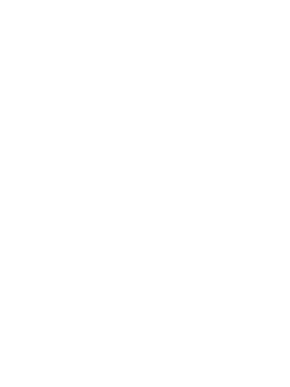
Carl Fabergé (1846–1920)
Fabergé firm, Henrik Wigstrom (workmaster)
Imperial Red Cross Easter Egg with Portraits
1915
Egg: gold, silver gilt, enamel, velvet
Surprise: mother-of-pearl, watercolor, ivory, glass
Egg: 7.6 x 6 cm
Miniatures: 4.9 x 19 x 0.6 cm
Stand: 5,87 x 7,46
Virginia Museum of Fine Arts, Bequest of Lillian Thomas Pratt
Photo Katherine Wetzel © Virginia Museum of Fine Arts
|
|
|
|
|
|
|
Accompanying the four imperial Easter eggs is the superb Brave Knights Kovsh, a masterpiece in silver depicting a triumphant Medieval cavalcade commemorating the origins of the Russian nation. The exhibition is an opportunity to discover the astonishing dexterity of Fabergé’s craftsmen in working with precious and semi-precious materials and enamel. It displays a wealth of objects in cut-rock crystal (notably a remarkable miniature terrestrial globe), hard stones (jade, bowenite, lapis lazuli), of which the most striking examples are the delightful multicoloured menagerie of birds and small dogs, and also the solemn miniature figure of a sailor from the imperial yacht Zarnista in quartz, aventurine, onyx, lapis lazuli, sapphires and gold.
The exhibition also reveals the full extent of Fabergé’s mastery of enamelled decoration, a major aspect of his production: cloisonné enamel in the Russian tradition for goblets and other objects in the Slavic folk tradition, and guilloché enamel in a more Western tradition for the decoration of cigarette boxes, picture frames and pommels for walking canes.
Above all, it demonstrates the special relationship between the Romanov family and the House of Fabergé by showing the extent to which, aside from the traditional imperial eggs, the small art objects produced in the workshops of Saint Petersburg were part of the official life (particularly through the presentation of official gifts) and the private life of the imperial family. An outstanding example of the latter is undoubtedly the picture frame in a six-point star shape of yellow and white guilloché holding the photograph of one of the czar’s daughters, the Grand Duchess Tatiana. Commissioned by Nicholas II and his wife in 1896, it was discovered among the family’s possessions in the house where the czar and his family were executed in July 1918.
Born of a Huguenot family who had fled the France of Louis XIV for Russia, a man of boundless imagination, multiple talents and a keen business instinct, Carl Fabergé (1846-1920) became the jeweller and goldsmith to the imperial court of Russia, creating for the nobility innumerable exquisite pieces of jewellery and precious objects, including the legendary series of sumptuous and ingenious imperial eggs. His international reputation soon attracted a clientele of other royal families, aristocrats, magnates and the artistic elite of Paris, Moscow, Saint Petersburg and London.
Carl Fabergé: the tragic story of an incomparable jeweller
To understand the aura of luxury and refinement that surrounds these objects, we must learn about Fabergé’s tireless quest for perfection and his astute marketing strategies. In the back rooms of the firm’s elegant showrooms in Moscow and Saint Petersburg, hundreds of goldsmiths, enamellers, stone carvers and lapidaries recruited from among the most skilled in Russia worked at creating unique pieces of extraordinary complexity.
In the hands of Fabergé’s craftsmen, even the most ordinary objects took on an unequalled aesthetic refinement. To achieve this level of excellence, no effort – financial, material or human – was spared. No event worthy of being celebrated by the imperial family could be allowed to pass without an enamelled Fabergé trinket, candy box or cigarette case, which made the wealthy and powerful Romanov family one of the leading ambassadors of the brand.
In 1917, the Russian Revolution put an abrupt end to the reign of the Romanovs and the House of Fabergé. The Bolsheviks seized their workshops and all the treasures they contained. Production came to an end, and Fabergé and his family fled the country. In 1951, a legal decision deprived the family of the right to produce and market objects under the Fabergé trademark.
The prestige of the firm, synonymous with luxury and expertise, continued to grow in the course of the twentieth century. In November of 2013, an impressive Fabergé Museum was opened in Saint Petersburg’s Shuvalov Palace by a Russian magnate who had purchased the entire Forbes collection.
A layout designed by Hubert Le Gall
Born in 1961, Hubert Le Gall is an internationally renowned French designer, painter and sculptor. A lover of decorative arts, he also creates furniture, carpets, light fixtures and other decorative objects, either one-of-a-kind or in limited editions. His furniture is hybrid, neither artwork nor strictly functional, but rather a bit of both. He enjoys playing with contrasts and skilfully combines a variety of materials: resin, wood and bronze.
Hungarian-born Dr. Géza von Habsburg, a world-renowned expert on the work of Fabergé, edited the major scholarly publication that accompanies the Richmond collection. He is the curatorial director of the London-based Fabergé Company and the author of numerous publications on the jeweller.
Fabergé Revealed at the Virginia Museum of Fine Arts is a major 422-page catalogue that presents the exhaustive Fabergé collection from Richmond with some 600 photographs. In addition to entries on Fabergé’s works, “Fauxbergés,” his imitators and other contemporary Russian decorative art objects, it contains essays by experts that provide new information on the jeweller, his techniques and his creations. Co-published in 2011 by the Virginia Museum of Fine Arts and Skira Rizzoli Publications, New York, in English.
Many of his pieces have been purchased by the Musée des Arts Décoratifs de Lille Roubaix and the MMFA ( Anthémis Chest of Drawers (1999)). Le Gall was recently commissioned by the Maison Odiot in Paris to create a collection of gold and silver lamps, and he has designed interiors for Christian Dior. He has created layouts for many exhibitions, including Mélancolie
(2005), Design – Contre Design (2007) and Monet (2010) for the Galeries nationales du Grand Palais and Masculin-Masculin at the Musée d’Orsay (2013).
Le Gall created the layouts for the Museum’s exhibitions Édouard Vuillard (2003) and Tiffany (2010) in Paris and Montreal. For this exhibition, the layout designed by Le Gall has been installed by Sandra Gagné, the Museum’s Head of Exhibitions Production.
An art book on Fabergé under the general editorship of Dr. Géza von Habsburg
To coincide with this exhibition, the MMFA has published, in collaboration with the French magazine L’Objet d’Art, a special issue on the exhibition featuring the main works in the collection and an interview with Dr. Géza von Habsburg. It also includes a history of the House of Fabergé, with illustrations of all the imperial Easter eggs, and examines Fabergé today and its symbolic status. Featuring 96 pages and 120 illustrations, it is available in English and French.
Guided tours are included with admission. An audioguide is available for rent in French and English.
Acknowledgements and curatorial staff
The exhibition was unveiled at the Virginia Museum of Fine Arts in 2011 and circulated to the Detroit Institute of Arts and the Peabody Essex Museum, Salem, in 2013 by its director Alex Nyerges, with the assistance of Robin Nicholson, Deputy Director for Art and Education at the VMFA, and Barry Shifman, Sydney and Frances Lewis Family Curator of Decorative Arts, 1890 to the Present at the VMFA.
In Montreal, the exhibition is organized under the direction of Nathalie Bondil, Director and Chief Curator, with the collaboration of Diane Charbonneau, Curator of Modern and Contemporary Decorative Arts, and Sylvain Cordier, Curator of Early Decorative Arts. The exhibition layout was created by Hubert Le Gall, an internationally renowned French designer and sculptor, under the supervision of Sandra Gagné, Head of Exhibitions Production at the MMFA.
The exhibition is presented in Montreal thanks to the support of Osler, Hoskin & Harcourt S.E.N.C.R.L./s.r.l. and the Museum’s Volunteer Association, whose exemplary fundraising activities have contributed to the Museum’s development since 1948.
The Museum wishes to thank Quebec’s Ministère de la Culture et des Communications for its essential support. Its gratitude also extends to the Conseil des arts de Montréal and the Canada Council for the Arts for their ongoing support.
We would like to acknowledge the steadfast support of the Volunteer Guides. We would also like to thank all our members and the many individuals, corporations and foundations who support our mission, notably the Arte Musica Foundation, headed by Pierre Bourgie, and the Fondation de la Chenelière, headed by Michel de la Chenelière.
The Museum’s International Exhibition Programme receives financial support from the Exhibition Fund of the Montreal Museum of Fine Arts Foundation and the Paul G. Desmarais Fund.
Finally, the Museum thanks Bell, La Presse and The Gazette, its media partners, and Air Canada, its official transportation partner.
About the Montreal Museum of Fine Arts
The Montreal Museum of Fine Arts has the highest attendance rate among Canadian museums. In 2013, over 1 million people visited its unique encyclopedic collection, which includes more than 40,000 works, and its original temporary exhibitions, which combine artistic disciplines (fine arts, music, film, fashion, design) and feature innovative exhibition designs. It conceives, produces and circulates many of its exhibitions across Europe and North America. It is also one of Canada’s leading publishers of art books in English and French, which are distributed worldwide. Over 200,000 families and schoolchildren take part in its educational, cultural and community-oriented programmes each year. The MMFA boasts 88,000 VIPs — the highest museum membership in Canada. The fall of 2011 saw the opening of a fourth pavilion at the Museum – the Claire and Marc Bourgie Pavilion of Quebec and Canadian Art – and a 444-seat concert venue – Bourgie Hall – housing an outstanding collection of Tiffany stained glass windows. This expansion also brought about the reinstallation of the Museum’s rich holdings in its other three pavilions, which house the world cultures, international art, Medieval to contemporary European art, and decorative art and design collections. Music is now an integral part of the Museum, providing another perspective on the visual arts through musical audioguides and other innovative activities. The Studios Art & Education Michel de la Chenelière, which were inaugurated in 2012, have almost doubled the Museum’s facilities for schools, families and community groups. A fifth pavilion devoted to international art and education will open its doors in 2017 for Montreal’s 375th anniversary.
About the Virginia Museum of Fine Arts
VMFA’s permanent collection encompasses more than 33,000 works of art spanning 5,000 years of world history. Its collections of Art Nouveau and Art Deco, English silver, Fabergé, and the art of South Asia are among the finest in the nation. With acclaimed holdings in American, British Sporting, Impressionist and Post-Impressionist, and Modern and Contemporary art – and additional strengths in African, Ancient, East Asian, and European – VMFA ranks as one of the top comprehensive art museums in the United States. Programs include educational activities and studio classes for all ages, plus lively after-hours events. VMFA’s Statewide program includes traveling exhibitions, artist and teacher workshops, and lectures across the Commonwealth. VMFA, a certified Virginia Green attraction, is open 365 days a year and general admission is always free. For additional information, telephone 804-340-1400 or visit vmfa.museum.

|

|

|

|

|
|
|
Carl Fabergé (1846–1920)
Fabergé firm, Henrik Wigstrom (workmaster)
Imperial Cesarevich Easter Egg
1912
Egg: Lapis lazuli, gold, diamonds
Surprise: platinum, lapis lazuli, diamonds, rock crystal, watercolor , ivory
Egg: 12.3 x 9 cm
Surprise: 9.5 x 6 cm
Stand: 6.6 x 10.4 cm
Virginia Museum of Fine Arts, Bequest of Lillian Thomas Pratt
Photo Katherine Wetzel © Virginia Museum of Fine Arts
|
|
|
|
|
Carl Fabergé (1846–1920)
Fabergé firm, Mikhail Perkhin (workmaster)
Miniatures: Johannnes Zehngraf
Imperial Pelican Easter Egg
1897
Gold, diamonds, enamel, pearls, ivory, watercolor, glass
Miniatures (left to right):
The Elisavetinskii Institute, St. Petersburg (1808)
Nikolaevskii Orphanage, St. Petersburg (1837)
Ekaterininski Institute, St. Petersburg (1798)
The Pavlovskii Institute, St. Petersburg (1853)
Smol’nyi Institute, St. Petersburg (1764)
The Patriotic Institute, St. Petersburg (1827)
Kseniinski Institute, St. Petersburg (1894)
Nikolaevskii Orphanage, Moscow (1837)
Egg: 10.1 x 5.3 cm
Stand: 6.3 x 6.6 cm
Virginia Museum of Fine Arts, Bequest of Lillian Thomas Pratt
Photo Katherine Wetzel © Virginia Museum of Fine Arts
|
|
|
|
|
Carl Fabergé (1846–1920)
Fabergé firm
Globeflowers
About 1900
Gold, enamel, nephrite, rock crystal
12.7 x 12 x 7.9 cm
Virginia Museum of Fine Arts, Bequest of Lillian Thomas Pratt
Photo Katherine Wetzel © Virginia Museum of Fine Arts
|
|
|
|
|
|
THE COLLECTIONS OF TWO EXTRAORDINARY WOMEN
From Jeweller of Yesteryear to Contemporary Designer, The Encounter of Two Different Visions By Nathalie Bondil, Director and Chief Curator of the Montreal Museum of Fine Arts Fabulous Fabergé, Jeweller to the Czars An exhibition presented in memory of Liliane M. Stewart
|
|

|

|

|
The European genius of Carl Fabergé, that most Russian of jewellers, the virtuosity of his techniques, his stylistic erudition, his business efficiency that saw to the production of some 200,000 objects between 1870 and 1917 and, finally, the fate of his firm, tragically linked to the history and fall of Russia’s Imperial household, have continued to fascinate, from the dollar princesses of yesteryear to the new czars of today. This is borne out by the highly symbolic opening of the Fabergé Museum in Saint Petersburg in the fall of 2013 by the oligarch Viktor Vekselberg: a remarkable piece of news . . . a century later.
|
|
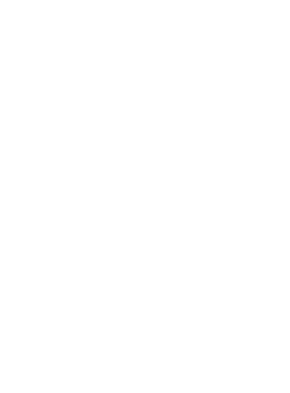
Liliane M. Stewart 1981-1982 Archives, The Macdonald Stewart Foundation
Photo Giles Rivest
|
|
|
|
|
|
|
The wife of a General Motors executive, Lillian T. Pratt (1876–1947) was passionate about the history of the Romanovs and about Fabergé objects, which were not necessarily to the taste of her husband. Her dogged determination prevailed over the lavish budgets of her American female rivals: she paid for the Peter the Great Egg in 33 monthly installments. Her collection was given to a new institution, the Virginia Museum of Fine Arts, which had opened its doors in 1936. The addition of the donation by Sydney and Frances Lewis in 1985 meant that this museum now has one of the finest holdings of Art Nouveau and Art Deco in the Americas. It is an outstanding collection, one fittingly heralding that assembled by another Liliane, who died recently.
It was with a similar passion that the Montrealer Liliane M. Stewart (1928–2014) envisioned building a public design collection with the creation of the Montreal Museum of Decorative Arts in 1979. Her five thousand or so objects from the twentieth century, primarily from the inter- war years to the contemporary period, were given to the Montreal Museum of Fine Arts in 2000, putting that institution at the forefront of American collections. From another generation, Liliane preferred modern “wearable sculptures” and, when I told her that her gold and silver jewels were going to be exhibited in the magnificent setting of the Hermitage, remarked, in that continually mischievous way of hers, “Next time, send the cardboard and plastic jewellery!”
In memory of Liliane M. Stewart’s visionary spirit, and as a tribute to her enduringly witty view of the world, Fabergé has been revisited here by a contemporary designer, Hubert Le Gall, from whom, moreover, she had purchased a work for our collection. Inspired as much by this designer’s playful and poetic imagination as by his knowledge of artisanal expertise, we have devised an exhibition installation whose unusual, evocative contrasts of miniature works with the saga of a vanished past links the decorative arts and its craftsmen and techniques with the history of Imperial Russia, from its medieval Orthodox traditions to the rise and fall of the Romanovs.
I should like to express my thanks to all those who have been involved in this project, especially our friend and partner Alex Nyerges, Director of the Virginia Museum of Fine Arts, with whom we share a respect for the philanthropy of those two strong and able women who, as he puts it, determinedly pursued “the same core values, most especially the importance of bringing great world art to our respective cities and communities.”
Nathalie Bondil
Director and Chief Curator The Montreal Museum of Fine Arts
Read more in Part II
THE MONTREAL MUSEUM OF FINE ARTS
1380 Rue Sherbrooke Ouest
Montréal, QC H3G 1J5
Canada
+1 (514) 285-2000
https://www.mbam.qc.ca

|

|

|

|

|
|
|
Carl Fabergé (1846–1920)
Fabergé firm, St. Petersburg, Julius Rappoport (workmaster)
Bratina
About 1900
Silver gilt, enamel, sapphires, emeralds, rubies, garnets, blue topaz, pearls
14.3 x 15.6 cm
Virginia Museum of Fine Arts, Bequest of Lillian Thomas Pratt
Photo Travis Fullerton © Virginia Museum of Fine Arts
|
|
|
|
|
Carl Fabergé (1846–1920)
Fabergé firm, St. Petersburg, Mikhail Perkhin (workmaster)
Star Frame
Before 1899
Gold, silver, enamel, pearls, glass, celluloid (modern)
8 x 7.3 x 1.2 cm
Virginia Museum of Fine Arts, Bequest of Lillian Thomas Pratt
Photo Katherine Wetzel © Virginia Museum of Fine Art
|
|
|
|
|
Fedor Rückert (1840–1917)
Loving Cup, 1899–1908
silver gilt, enamel, garnets
23.5 x 22 cm.
Virginia Museum of Fine Arts, Jerome and Rita Gans Collection of Russian Enamel. Photo Travis Fullerton © Virginia Museum of Fine Arts
|
|
|
|
|
|
|
|
|


